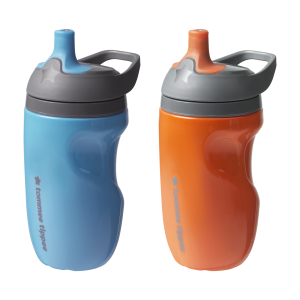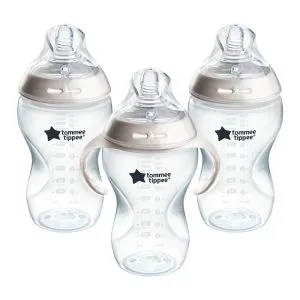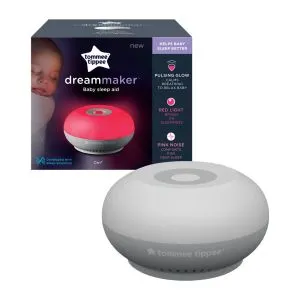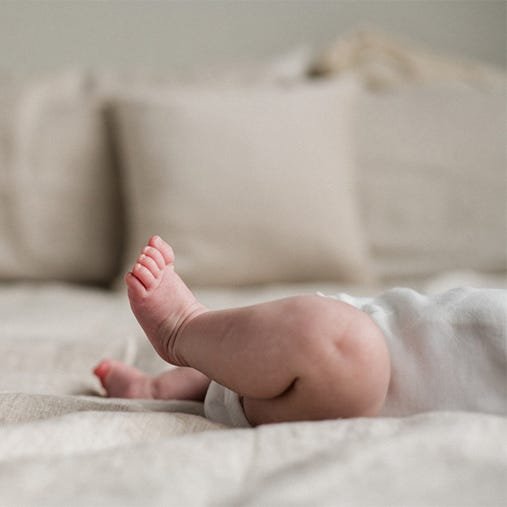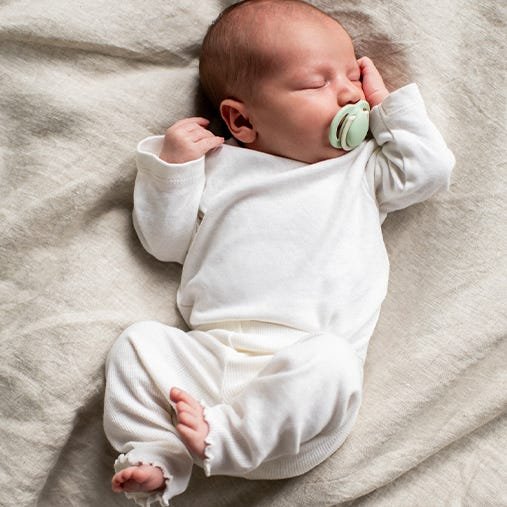So, you've heard of dream feeding but you're not sure what a dream feed is, or how to do it. Let's run through all the dream feed details that you need to know.
Dream feeding is breastfeeding or bottle feeding a baby during the evening without fully waking them to encourage them to sleep for longer. It's a term that was originally coined by nurse and author Tracy Hogg and is popular among many parents as it means longer stretches of sleep for everyone involved.
What is a dream feed?
Also sometimes known as focal feeding, dream feeding is based on scheduled awakenings when a baby is roused a little before they would naturally wake themselves during the night, breast or bottle fed, and then soothed back to sleep in the normal way.
It's initiated by parents, and can be helpful for babies who need to feed during the night but are waking at unpredictable times every two to three hours to do so. By gently waking them to feed a few hours after they went to sleep and just before you go to bed yourself, they're less likely to need to feed through the night.
When and how to dream feed
Although we all have different schedules, dream feeds are usually recommended in the late-night hours between 10 pm and midnight, around two or three hours after you've put your baby down to sleep.
There's no right or wrong way to dream feed, just what works for you. The most important thing to remember is that any disturbance that could fully wake your little one should be kept to a minimum.
You should quietly pick your baby up to feed them, rocking or swaying can help to keep them snoozy as they feed.
If your little one seems to be in a very deep sleep, you can try rousing them a little by tickling their feet or stroking the corner of their mouth to stimulate their rooting reflex, or wait a few minutes and try again. Within 10 to 20 minutes, your baby may be in a lighter REM sleep stage and able to feed successfully.
The benefits of dream feeding
- Reduce their suck-to-sleep association: Very young babies often fall asleep while feeding, and over time, this can form a suck-to-sleep association that can be difficult to break. If your baby always needs to feed to fall asleep, they'll ask for multiple feeds during the night whenever they wake up, even if they're not hungry. Because dream feeds happen when your baby is sleeping, they can help to break their suck-to-sleep association.
- Fewer night feeds: Although sleeping patterns differ from one baby to the next, starting dream feeds in the early days may mean that you'll need to feed your little one less frequently during the night. Plus they'll sleep for longer, and be less likely to wake up with a hungry rumbly tummy.
- Fewer interruptions when feeding: Babies can sometimes become distracted during feeds when they're wide awake. Feeding them when they're sleepy reduces the chances of interruptions, meaning they'll finish their feed more efficiently.
- Longer sleep for you: Because your baby sleeps for longer after their dream feed, you'll be able to bank a little more rest and shut-eye too, bonus!
